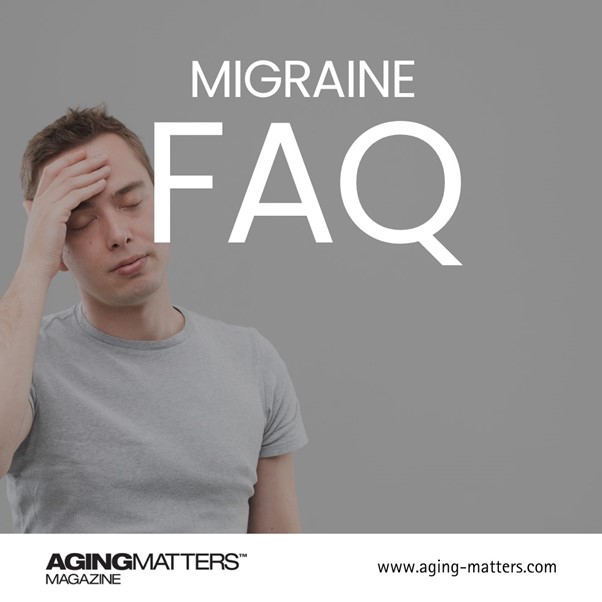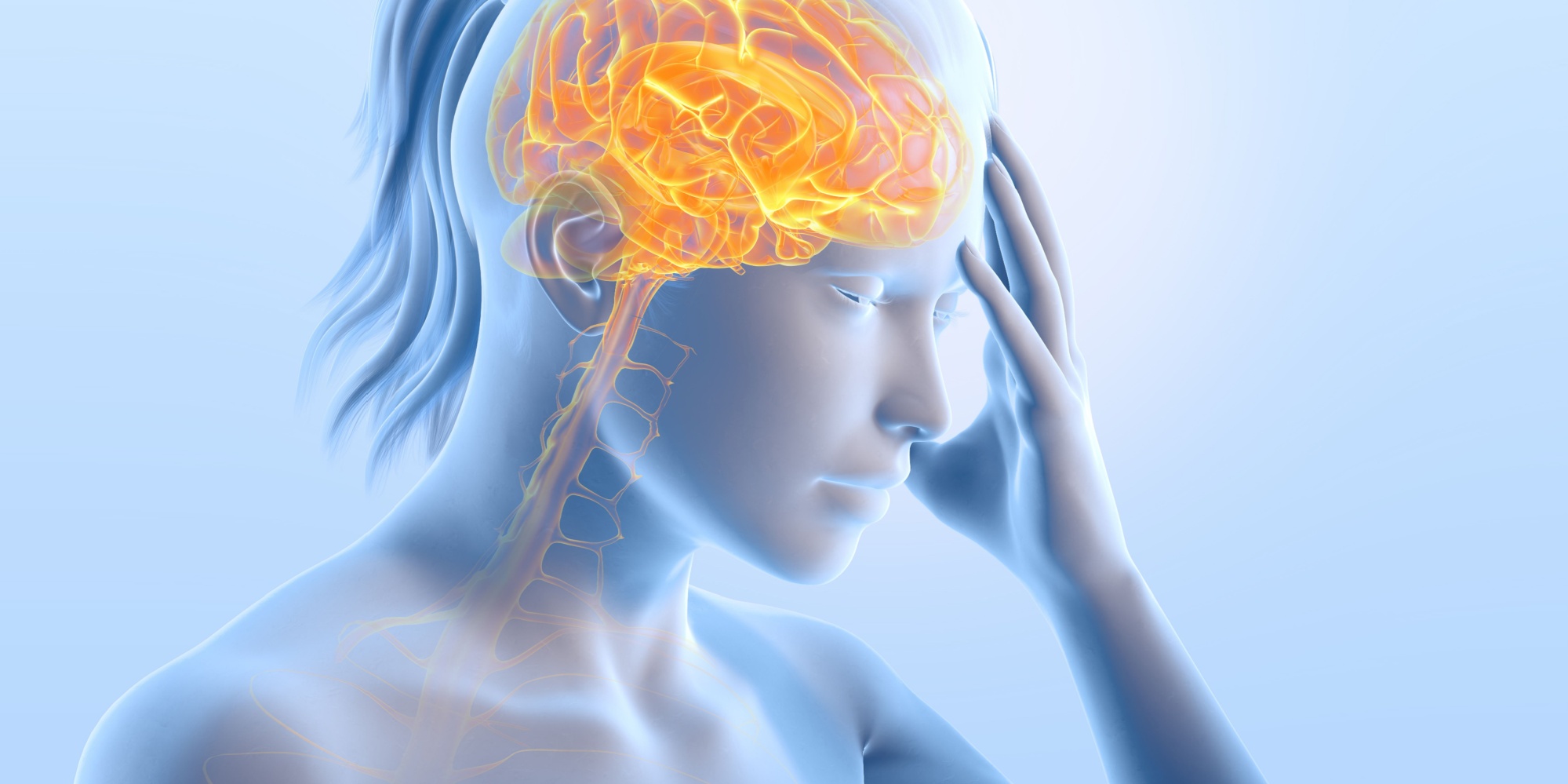
Frequently asked questions about Migraines
July 25th, 2024Migraines are challenging both mentally and physically, and for those who suffer them on a regular basis, they can have a significantly detrimental effect on everyday life. Whilst there is no one definite cause of migraine, genetic and environmental causes are thought to play primary roles in why a migraine attack may occur.
What is a migraine?
A migraine is a severe headache that comes on with no definite cause and is often accompanied by other sensations such as visual disturbances (“aura”) nausea, vomiting, light sensitivity and sound sensitivity. Unlike a “normal” headache, people suffering from a migraine may not be able to function and can experience these symptoms over a period of days if untreated. [1]
Many people become aware that a migraine attack is occurring when they experience visual disturbances, which often occur prior to the headache. This is called “aura” and can take place as blind spots in vision, flashing lights, zigzags of light, or other, non-visual symptoms such as tingling in the face or limbs and difficulty speaking. No one person will experience the same aura or symptoms as another, and not everybody who suffers a migraine will experience aura or physical symptoms prior to or during a migraine attack.
Who may experience a migraine?
Both adults and children can experience migraines.
Are migraines hereditary?
Whilst some people do not have a known family link with migraines, most often there is a genetic link between migraine sufferers. Famial Hemiplegic Migraine has been linked to a specific gene, but not the more common forms of migraine.
What are the stages of a migraine attack?
There are 4 known stages; these are:
- Prodrome – prior to a migraine, some people may experience unusual symptoms such as food cravings, mood changes and constipation. It can be hard to know whether these mean a migraine is coming or they are unrelated.
- Aura – Aura tends to happen, if its going to happen, up to an hour before the migraine headache occurs. Not everyone will experience aura, or all of the symptoms. Aura tends to last no longer than an hour, and often less.
- Attack – a migraine attack is the headache stage. Most often experienced on one side of the head only (although not always), this stage is often accompanied by feeling sick or being sick, unusual sensitivity to light/sound and sometimes smell/touch, and throbbing head pain.
- Post-drome – this is the name for the washed out/drained feeling up to a day after the migraine attack stage has finished. Many people need to rest or sleep.
What are “triggers”?
“triggers” is the term used for aspects of everyday life that could cause a migraine attack. Different people have different triggers, or may never know what their triggers are.
Common migraine triggers
- Bright lights, especially flashing lights
- Red wine
- Caffeine
- Sweet treats/chocolate
- Certain medications
- Alcohol
- Poor sleep or changes in sleep
- Low blood sugar/skipping meals
Treating a migraine
There are different ways to approach treating a migraine. These can include preventative options, treatments to take during a migraine attack, lifestyle changes or adaptions for during an attack, and how to feel better quicker after a migraine.
Preventative migraine measures
Those who suffer with migraines regularly will most likely have a good idea of what their triggers are and can avoid them to reduce the risk of a migraine attack.
Other preventative methods for migraine include:
- Regular exercise, to keep endorphin levels high
- Getting good quality, regular sleep
- Staying hydrated, especially if you are undertaking exercise regularly.
What to do during a migraine attack
Treatment options during a migraine include pain relief and anti-sickness medication.
- NSAID medication such as paracetamol, ibuprofen or Naproxen can help with migraine attacks
- Medications called triptans [2] which mimic the action of brain chemical serotonin, helping to quiet down overactive pain nerves.[3]
- Natural pain relief options such as Discomfort ReliefPro™ which contains the chemical Palmitoylethanolamide (PEA), proven in over 500 clinical trials to ease and reduce pain and swelling.
- Anti sickness medications can be helpful if you suffer from severe nausea and vomiting during a migraine.
Lifestyle adaptions if possible during a migraine [3] & [4] include:
- Lying down, preferably in a darkened room
- Drinking plenty of water to keep hydrated (especially important if you are being sick)
- Drinking caffeine (caffeine can help with a migraine but doesn’t work for everyone, so this should only be an option if you do not have a sensitivity to caffeine) [5]
- Moving as little as possible, especially during the severe pain stage, as too much movement can make pain and sickness worse.
- Trying to sleep if possible.
- If you can, undertaking some gentle exercise like a slow walk. Exercise has been shown to reduce the duration, frequency and severity of migraine attacks through the release of beta endorphins.
- Eating – if you can, eat small snacks or meals regularly to maintain blood sugar levels. Some people do have food triggers such as chocolate or sweet foods, so avoid these if you know they are a trigger.
Migraine recovery methods
Post-migraine (post-drome) symptoms can include tiredness, weakness, extreme fatigue and a feeling of general malaise. A small percentage of people report feeling elated despite physical tiredness, although this is not common.
To help migraine recovery and get back to normal quickly, methods include gentle exercise to release endorphins, taking dietary supplements to boost energy and aid sleep, taking more time to sleep and rest if needed, staying hydrated and taking time to do things you enjoy, which will help you to feel better quicker.
Different types of migraine
There are a number of types of migraine, which can affect different people based in part on their age and gender [6]. These include:
Classic migraine – presents with aura
Common migraine – presents without aura.
These are the most common types of migraine. Whilst there are a number of other types, they are uncommon.
Abdominal migraine (typically presents in children) – this presents as severe abdominal pain lasting anywhere between an hour to 3 days. There is often no head pain although it has been reported that both migraine headache and abdominal migraine can occur together. Children are the most common sufferers but adults can suffer with these as well.
Retinal (ocular) migraine – this affects the eyes and vision, causing visual problems like flashing lights in one eye or even blindness. Often short lived, they can occur alongside migraine headaches or on their own.
Chronic migraine – chronic migraines are where an individual may experience headaches for more than 15 days a month, with 8 days out of this 15 experiencing migraine symptoms. This is different to episodic migraine, whereby the individual may experience fewer headache days with migraine symptoms.
Hemiplegic migraine – Hemiplegic migraines are rare. This is where a person may experience a migraine alongside hemiplegia – weakness down one side of the body. Hemiplegia is an type of aura when experienced with a migraine.
Silent migraine – These are migraines without a headache. An individual may experience an aura or aura symptoms but no headache. They have been linked with risk of suffering an ischaemic stroke, although this is a very low risk.
Menstrual migraine (women only) – this occurs just before or during a woman’s period. They are related to changes in estrogen levels which drop immediately before menstrual flow begins.
Resources
[1] https://www.mayoclinic.org/diseases-conditions/migraine-headache/symptoms-causes/syc-20360201
[2] https://www.webmd.com/migraines-headaches/triptans-migraines
[3] https://americanmigrainefoundation.org/resource-library/lifestyle-changes-for-migraine/
[4] https://www.nhs.uk/conditions/migraine/
[5] https://migrainetrust.org/news/migraine-and-caffeine/
[6] https://my.clevelandclinic.org/health/diseases/5005-migraine-headaches






